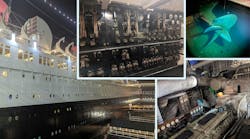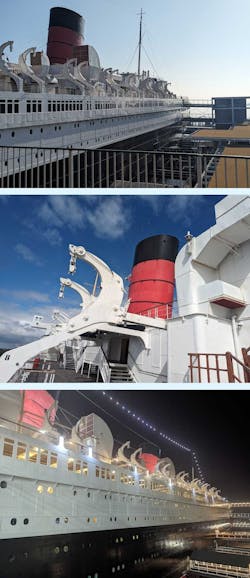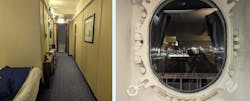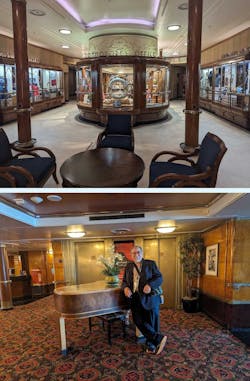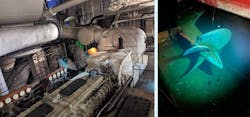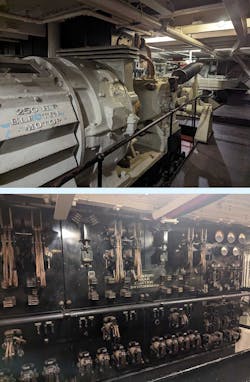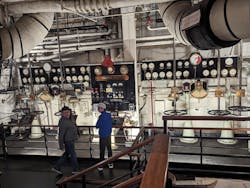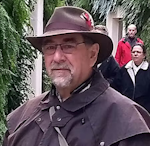The Sublime Joys of Geek Tourism: Visiting the Engine Room of a Historic Steamship
What you’ll learn:
- Geek tourism embraces a wide variety of activities and destinations that appeal mainly to engineers and other individuals who take delight in exploring the technical underpinnings of our world.
- A tour of the Queen Mary, a near-century-old ocean-going steamship, offers both techie and non-techie types a glimpse of the elegance, history, and amazing technology that made her a marvel of the early 20th century.
- You’re invited to share your favorite geek tourist destinations with your fellow readers, and have them included in a subsequent article.
My wife Catherine and I are looking forward to a summer of camping, cultural events, and geek tourism. After being together for over 30 years, we've gotten pretty good at striking a balance between activities that appeal to our common interests (visiting botanical gardens and spending time near the ocean) and the ones that appeal to our own peculiar passions.
As a result, I've learned to enjoy attending all kinds of musical events and quilt shows, as well as visiting the local quilt shop in whatever part of the country we happen to find ourselves in. Catherine has it a bit tougher, since my brand of tourism includes many geeky attractions that appeal mainly to engineers and other individuals who take delight in exploring the technical underpinnings of our world.
Thankfully, my wife is a good sport and has willingly accompanied me on pilgrimages to geek shrines like the Ellsworth Telephone Museum; the Info Age Museum of Radio, Computer, and Military Technology; Historic Slater Mill; and the Herr's snack food factory tour, where you get up close and personal with the gigantic machines that churn out tons of pretzels, potato chips, and other treats every hour. Unfortunately, Catherine was unable to accompany me on my latest geek adventure aboard the ocean liner Queen Mary.
Budget Time Travel
During my visit to the APEC 2024 power technology conference, I had the pleasure of staying aboard the Queen Mary, a gigantic steamship which plied the Atlantic from the 1930s through the 1960s. It’s now anchored in Long Beach, Calif., where it enjoys a comfortable retirement, serving as a beautifully restored floating museum and hotel complex.
Located a short drive (or a long walk) from the convention center, the Queen Mary was a great place to stay, with the rate for a standard stateroom costing about the same (or less) than what you'd pay for a nearby 2- or 3-star hotel. Better yet, you get a bonus time travel excursion to the early 20th century thrown in at no extra charge.
After checking in, I strolled down the ship's beautiful wood-paneled corridors to my modest, but very cozy cabin that boasted all of the modern amenities offered by a 1930s-era luxury liner. Although the electric fireplace and the second set of taps that allowed you to fill your bathtub with filtered seawater were no longer operating, the built-in folding writing desk, Art Deco décor, and generously sized porthole that dominated my room provided a vivid glimpse of thrill and glamor that passengers experienced nearly a century ago.
During my stay, I got to see a few of the steamer's public areas, including one of the grand ballrooms, and the main shopping concourse, as well as enjoy a fancy breakfast in the forward salon. I also saw a fascinating exhibit that documents the ship's service as a troop carrier during WWII. Its top speed of 30+ knots enabled it to outrun the German submarines that terrorized most Allied shipping in the Atlantic.
But my biggest thrill came at the last day of my stay when I took an extended tour of what remained of the Queen Mary's vast engine room.
The Heart of a Steel Thoroughbred
In its day, the Queen Mary was powered by four propulsion machinery groups, each consisting of four turbines (one high-pressure, two intermediate-pressure, and one low-pressure turbine), and a steam recovery condenser. Each of these turbine assemblies was fed by six oil-burning steam boilers, and was capable of producing 40,000 hp for a total of 160,000 hp under "full steam" (about 750 psi). Another auxiliary boiler complex drove a pair of turbo-generators that produced electricity for the passenger areas and the ship's internal systems.1
Each propulsion unit turned its own four-bladed manganese-bronze propeller, measuring 20 feet in diameter and weighing roughly 35 tons. They were located in two separate engine rooms, with the forward room driving the two outer propellers and the aft room driving the two inner propellers. Together, they were able to drive the 80,000+ ton ship at sustained speeds of 28.5 knots, and over 30 knots when required.2
To prepare the Queen Mary for her new role as a historic attraction, all of the ship's boilers and equipment in the forward engine room were removed and scrapped, leaving only the aft engine room that drove the two inner propellers on the ship. Thankfully, the ship's massive steering gear system, its main electrical distribution panel, and a few other pieces of vital equipment still remain to tell their story.
Steampunk Star Trek
The portions of the Queen Mary's original systems that remain accessible for viewing are beautifully preserved. They manage to convey a sense of the enormous scale, complexity, and of the power plant that enabled the Queen Mary to set several new speed records during her lifetime.
Descending into the engine room, I felt transported back nearly a century to a place that was filled with enormous machines, mazes of pipes and wires, endless ranks of round dial gauges, and row after row of Frankenstein-style electrical knife switches.
Wedged into the ship's curved stern was the ship's steering gear section, consisting of a pair of 250-hp electric motors, pumps, and hydraulic pistons that were used to position the ship's 110-ton rudder. Moving forward, I entered an observation gallery located on the outside of the hull, where I stared down into a deep pool of water in which the ship's remaining propeller lay submerged, still attached to its massive drive shaft.
From there, I walked through the alley that housed the propeller shaft and into the turbine room. The four turbines, their respective condensers, and all of their associated pumps, valves, and regulatory apparatus were tightly woven together by undulating trails of piping and wires that ran everywhere. On the far wall, the ship's main electrical control panel was perched on an elevated deck that spanned most of the width of the ship.
Standing within this now dormant giant, I experienced an overwhelming sensation of what it might be like to be aboard a very early version of the Starship Enterprise, albeit from an era before warp drives and dilithium crystals were available.
As I tried to get a sense of what it would be like to operate the equipment that inhabited this cavernous space, I could easily imagine Mr. Montgomery Scott, the Enterprise's chief engineer, standing on the control panel deck as he wrestled the valves and levers that fed steam to the turbines while shouting orders to the other members of his team who toiled in that engine room ("Cap'n we're already pushing her main turbines to 800 psi, I dunno how much more she can take!").
I had so much fun that I've promised Catherine we will stay aboard the Queen Mary the next time we find ourselves in Long Beach, where we can experience the beauty and elegance of a bygone era together. I can’t wait to stroll the main decks with her as we marvel in the ship's opulent Art Deco-styled public areas before we retire to sip cocktails in the Queen Mary's beautifully restored nightclub. Surprisingly, she says she’s also looking forward to a brief sojourn to the ship's engine room, where I spent a couple of very happy hours during my recent solo business trip.
Geeky Plans Afoot
In the meantime, I've got a few more geek tourist destinations that I hope to work into our summer plans. Some of the attractions at the top of my list include the a visit to a coal mining museum and a nearby steam railroad, as well as a second trip to the Intrepid Air and Space Museum, a retired aircraft carrier anchored in New York's Hudson River that houses a large collection of educational exhibits and rare aircraft. If we get to San Francisco this year, visits to the city's Cable Car Museum, the fabulous Tonga Room Tiki Bar, and a number of other geeky venues featured in Atlas Obscura will be on our itinerary.
Do you have any favorite geek tourist destinations you'd like to share with your fellow readers? Please either put them in the comments section of this article or write to me at lgoldberg(at)green-electronics.com. I'll publish your suggestions in a subsequent article, along with several more of the places on my must-visit list.
References
1. Shipping Wonders of the World – Queen Mary's Engines.
2. “The Power Train of the Queen Mary,” from “The Queen Mary: A World-Class Maritime Landmark.”
